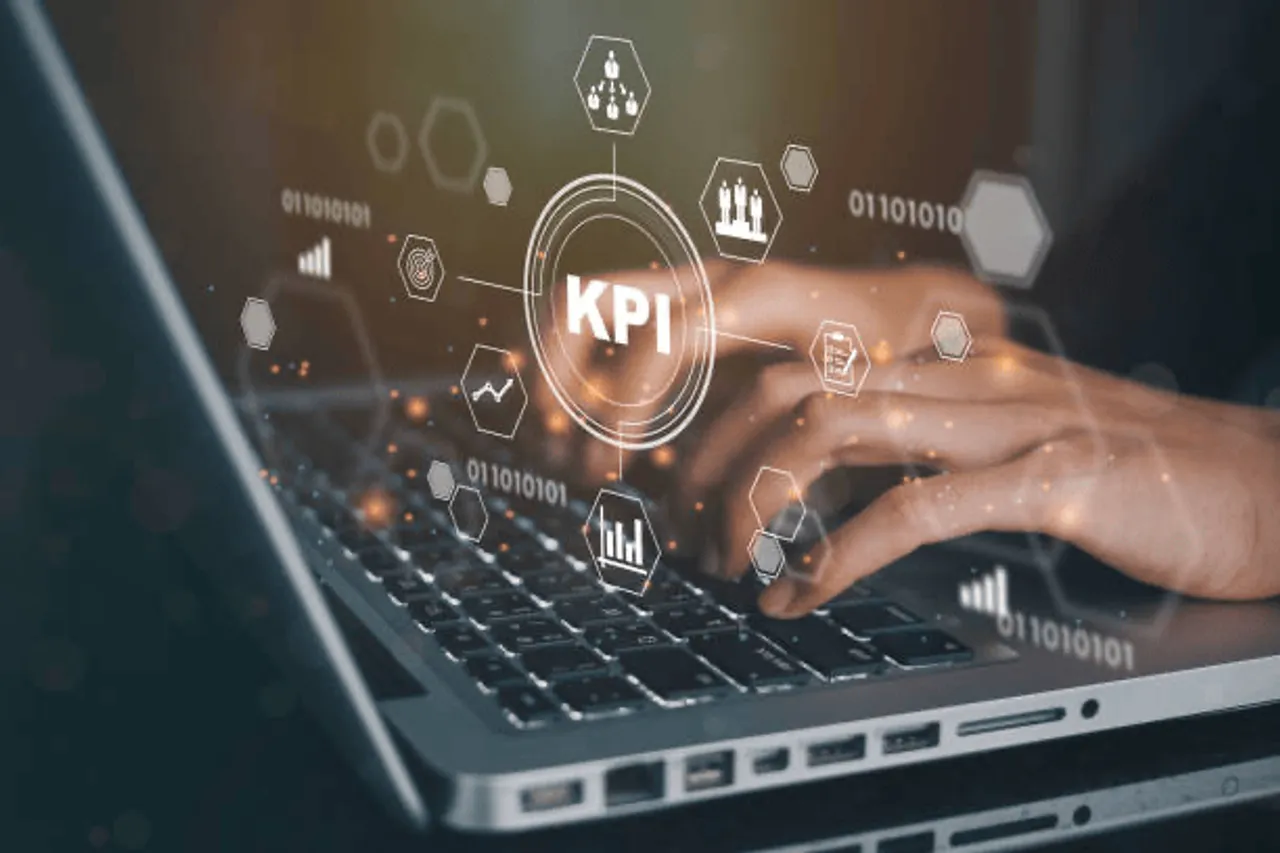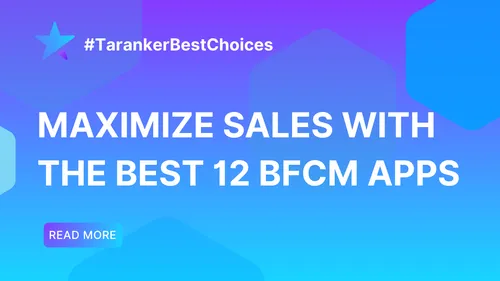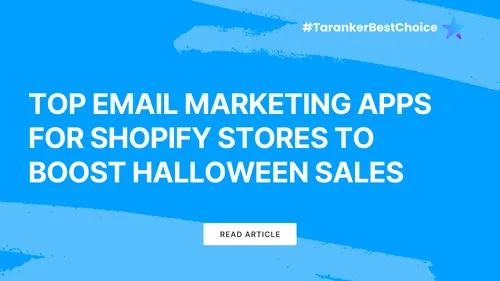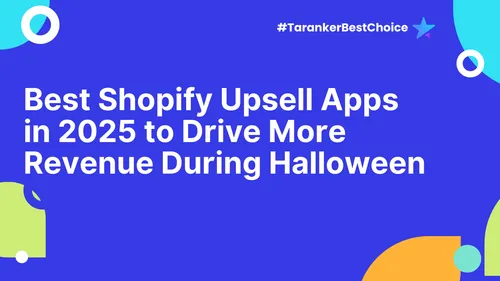Did you know that businesses that actively track and optimize their KPIs are up to 20% more likely to meet their revenue goals? Despite this, many Shopify store owners either focus on the wrong performance indicators or track too many, leading to data overload and poor decision-making.
A successful Shopify store is not built on guesswork. The key to consistent revenue growth and operational efficiency lies in selecting and tracking the right KPIs that align with business objectives. However, with an overwhelming number of available metrics, it can be challenging to determine which ones truly drive success.
Understanding the difference between general metrics and high-impact KPIs is crucial for focusing on the right data points that drive business growth. Identifying the most relevant KPIs requires aligning them with your business goals, ensuring that each metric directly contributes to success. Implementing effective tracking and optimization strategies allows Shopify store owners to make informed decisions and continuously improve performance.
By the end, you will have a clear roadmap for leveraging KPIs to scale your Shopify business with confidence.

1. The Five Criteria of a Strong KPI
Not all KPIs are created equal. A truly effective KPI must meet five key criteria to ensure it contributes meaningfully to your Shopify store’s success:
-
Alignment with Business Goals – A strong KPI must directly relate to your overall business objectives. For example, if your goal is to increase revenue, tracking conversion rates and customer lifetime value would be far more relevant than simply monitoring website traffic.
-
Measurable with Clear Numerical Values – KPIs should be quantifiable, providing concrete data that can be tracked over time. Metrics such as average order value (AOV) or customer acquisition cost (CAC) offer clear insights that help measure performance.
-
Actionable for Decision-Making – An effective KPI should provide insights that lead to immediate and strategic actions. If tracking a KPI does not help in making informed business decisions, it may not be relevant.
-
Realistic Based on Available Resources – A KPI must be achievable given the current scale and resources of your business. Setting an unrealistic KPI, such as doubling conversion rates in one month, can lead to frustration and wasted effort.
-
Time-Bound to Evaluate Progress – KPIs should be tracked within a specific timeframe to assess performance accurately. Monitoring trends over time, such as monthly revenue growth or quarterly customer retention, ensures your business stays on track toward long-term goals.
If a metric does not meet these five criteria, it should not be prioritized as a KPI, as it may lead to distractions rather than progress.
2. Choosing the Right KPIs for Your Shopify Business
2.1. If Your Goal is to Increase Sales
If your Shopify store's goal is to increase sales, focus on KPIs that highlight how well you’re converting visitors into paying customers and how much they spend per order. These KPIs help you track not only performance but also opportunities to grow revenue from each visitor.
-
Conversion Rate: Measures the percentage of website visitors who complete a purchase. To improve this, optimize your product pages, streamline the checkout process, and use limited-time offers to drive urgency.
-
Average Order Value (AOV): Indicates the average amount spent per order. This can be enhanced through upselling, bundling products, or offering volume-based discounts.
-
Revenue Per Visitor (RPV): Shows the revenue generated from each site visitor. You can increase RPV by refining your pricing strategy and creating a more personalized shopping experience.
2.2. If Your Goal is to Improve Customer Retention
To build a sustainable Shopify business, retaining customers is just as important as acquiring new ones. The right KPIs can help you understand how loyal your customers are and where improvements can be made in their overall experience.
-
Customer Lifetime Value (CLV): Estimates the total revenue a customer generates throughout their relationship with your brand. Improve CLV by enhancing customer support, offering loyalty rewards, and running targeted campaigns.
-
Repeat Purchase Rate: Measures the percentage of customers who return for another purchase. Increase this by sending timely follow-up emails, offering discounts on second purchases, and creating engaging post-purchase experiences.
-
Churn Rate: Indicates how many customers stop buying over time. Lower this rate by improving product quality, gathering and acting on customer feedback, or offering subscriptions that encourage retention.
2.3. If Your Goal is to Reduce Marketing Costs & Improve ROI
Marketing can be one of the most expensive areas of your business. Tracking KPIs that evaluate performance and efficiency can help reduce waste and improve your return on every dollar spent.
-
Customer Acquisition Cost (CAC): Measures the average cost of acquiring a new customer. Reduce CAC by optimizing ad targeting, using referral marketing, and increasing organic traffic.
-
Return on Ad Spend (ROAS): Tracks how much revenue is generated per advertising dollar. Improve ROAS by refining creatives, targeting high-converting segments, and monitoring ad platform performance.
-
Email Open & Click-Through Rates: Indicates the effectiveness of your email marketing efforts. Enhance engagement through personalization, segmentation, and A/B testing subject lines or content.
2.4. If Your Goal is to Optimize Operations & Inventory
Operational efficiency is key to scaling a Shopify store. The right KPIs will help ensure that your logistics, fulfillment, and stock management processes are running smoothly and cost-effectively.
-
Cart Abandonment Rate: Reveals how many users add to cart but don’t complete their purchase. Decrease abandonment by simplifying checkout, adding trust signals, and offering recovery emails or discounts.
-
Order Fulfillment Time: Tracks how quickly orders are processed and shipped. Shorten fulfillment time by automating workflows, improving inventory management, and working with faster shipping partners.
-
Stock Turnover Rate: Measures how often inventory is sold and restocked. Optimize turnover by analyzing product demand, promoting slow-moving items, and refining your supply chain forecasting.
3. How to Track & Optimize Your KPIs
3.1. Best Tools for KPI Tracking
Effectively measuring and analyzing KPIs requires the use of reliable tools. Shopify Analytics provides essential insights into sales, traffic, and customer behavior. Google Analytics offers detailed reports on website performance and user activity. For email marketing performance tracking, platforms like Klaviyo and Omnisend help businesses understand engagement rates. Additionally, Hotjar provides heatmaps and session recordings, allowing store owners to improve user experience and optimize website interactions.
-
17TRACK Order Tracking – A powerful order tracking solution that enables Shopify store owners to provide real-time shipping updates, automate status notifications, and enhance customer satisfaction with a seamless tracking experience. Learn more about 17TRACK.
-
TrackingMore Order Tracking – A comprehensive tracking tool that integrates with multiple carriers, offers a multilingual tracking page, and provides proactive shipment updates, making order management easier for businesses. Explore TrackingMore.
-
Track123 Order Tracking – A feature-rich tracking system that syncs with PayPal, offers personalized product recommendations, and provides an advanced analytics dashboard for better shipment insights. Discover Track123.

3.2. How to Turn KPI Data into Actionable Insights
Tracking KPIs is only valuable when insights are actively applied to improve business performance. To effectively utilize KPI data, businesses should follow a structured approach:
-
Set a Baseline and Identify Key Metrics – Begin by assessing current KPI values to establish a benchmark. Understanding your starting point is essential before making adjustments to measure improvement accurately.
-
Analyze Data and Identify Trends – Regularly monitor KPI trends to detect performance patterns, seasonal variations, and shifts in customer behavior. This helps store owners understand what is working and where optimization is needed.
-
Run A/B Tests for Continuous Improvement – Experiment with different strategies, such as changes in product pricing, ad creatives, or checkout processes. Comparing variations helps determine the most effective approach for improving specific KPIs like conversion rates or customer retention.
-
Implement Proactive Adjustments Based on Insights – Once patterns and successful strategies are identified, take action by refining marketing efforts, optimizing website performance, and improving customer experience based on the KPI data.
-
Automate Reporting for Real-Time Monitoring – Use real-time dashboards to continuously track KPI performance and make timely decisions. Automating reports allows businesses to react quickly to changing trends and ensure long-term success.
By following these steps, Shopify store owners can transform raw KPI data into meaningful insights, driving better decision-making and sustainable business growth.
4. Real-World Case Study:
A Shopify fashion brand was facing low conversion rates (1.2%) and high acquisition costs ($45 per customer). After analyzing their KPIs, they discovered high cart abandonment rates, inefficient ad spend, and low repeat purchase rates despite high initial engagement.
To address these issues, they optimized mobile checkout, reduced abandonment rates significantly, shifted ad budget to high-converting demographics, lowering CAC by 33%, and launched a loyalty program, increasing repeat purchases by 28%. By focusing on a few key KPIs, the brand doubled its conversion rate and improved profitability within a quarter.
5. Conclusion:
Selecting the right KPIs is essential for making data-driven decisions that fuel business growth. Instead of tracking an overwhelming number of metrics, Shopify store owners should focus on a handful of KPIs that align with business objectives, use real-time tracking and historical analysis to inform decisions, and regularly analyze, refine, and adapt strategies for continuous improvement.
Now is the time to act. Choose your key KPIs, implement tracking systems, and make data-backed decisions to scale your Shopify store sustainably.














